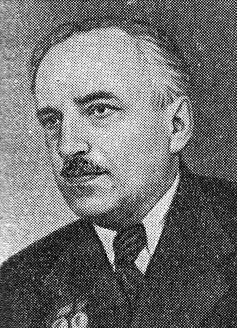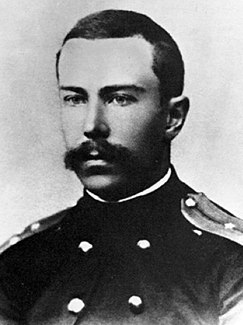
The Symphony No. 9 in D minor, Op. 125, also known as Beethoven's 9th, is the final complete symphony by Ludwig van Beethoven, composed between 1822 and 1824. It was first performed in Vienna on 7 May 1824. One of the best-known works in common practice music, it is regarded by many critics and musicologists as one of Beethoven's greatest works and one of the supreme achievements in the history of western music. In the 2010s, it stands as one of the most performed symphonies in the world.

Philip Glass is an American composer. He is widely regarded as one of the most influential musicians of the late 20th century. Glass's work has been described as minimal music, having similar qualities to other "minimalist" composers such as La Monte Young, Steve Reich, and Terry Riley. Glass describes himself as a composer of "music with repetitive structures", which he has helped evolve stylistically.

Josef Anton Bruckner was an Austrian composer, organist, and music theorist best known for his symphonies, masses, Te Deum and motets. The first are considered emblematic of the final stage of Austro-German Romanticism because of their rich harmonic language, strongly polyphonic character, and considerable length. Bruckner's compositions helped to define contemporary musical radicalism, owing to their dissonances, unprepared modulations, and roving harmonies.

John Towner Williams is an American composer, conductor, and pianist. With a career spanning over six decades, he has composed some of the most popular, recognizable, and critically acclaimed film scores in cinematic history, including those of the Star Wars series, Jaws, Close Encounters of the Third Kind, Superman, E.T. the Extra-Terrestrial, the Indiana Jones series, the first two Home Alone films, Hook, the first two Jurassic Park films, Schindler's List, and the first three Harry Potter films. Williams has been associated with director Steven Spielberg since 1974, composing music for all but four of his feature films––Duel, The Color Purple, Bridge of Spies and Ready Player One. Other works by Williams include theme music for the 1984 Summer Olympic Games, NBC Sunday Night Football, "The Mission" theme used by NBC News and Seven News in Australia, the television series Lost in Space and Land of the Giants, and the incidental music for the first season of Gilligan's Island. Williams has also composed numerous classical concertos and other works for orchestral ensembles and solo instruments. He served as the Boston Pops's principal conductor from 1980 to 1993, and is currently the orchestra's laureate conductor.

The Symphony No. 5 in D major/D minor, Op. 107, known as the Reformation, was composed by Felix Mendelssohn in 1830 in honor of the 300th anniversary of the Presentation of the Augsburg Confession. The Confession is a key document of Lutheranism and its Presentation to Emperor Charles V in June 1530 was a momentous event of the Protestant Reformation. This symphony was written for a full orchestra and was Mendelssohn's second extended symphony. It was not published until 1868, 21 years after the composer's death – hence its numbering as '5'. Although the symphony is not very frequently performed, it is better known today than when it was originally published. Mendelssohn's sister, Fanny Mendelssohn Hensel, chose the name Reformation Symphony.
Pyotr Ilyich Tchaikovsky's Symphony No. 4 in F minor, Op. 36, was written between 1877 and 1878. Its first performance was at a Russian Musical Society concert in Moscow on February 22, 1878, with Nikolai Rubinstein as conductor. In Middle Europe it sometimes receives the nickname "Fatum", or "Fate".
The Symphony No. 5 in E minor, Op. 64 by Pyotr Ilyich Tchaikovsky was composed between May and August 1888 and was first performed in St Petersburg at the Mariinsky Theatre on November 17 of that year with Tchaikovsky conducting. It is dedicated to Theodor Avé-Lallemant.
A Faust Symphony in three character pictures, S.108, or simply the "Faust Symphony", was written by Hungarian composer Franz Liszt and was inspired by Johann Wolfgang von Goethe's drama, Faust. The symphony was premiered in Weimar on September 5, 1857, for the inauguration of the Goethe–Schiller Monument there.

Metamorphosen, study for 23 solo strings is a composition by Richard Strauss, scored for ten violins, five violas, five cellos, and three double basses, typically lasting 25 to 30 minutes. It was composed during the closing months of the Second World War, from August 1944 to March 1945. The piece was commissioned by Paul Sacher, the founder and director of the Basler Kammerorchester and Collegium Musicum Zürich, to whom Strauss dedicated it. It was first performed in 25 January 1946 by Sacher and the Collegium Musicum Zürich, with Strauss conducting the final rehearsal.
Symphonic Metamorphosis of Themes by Carl Maria von Weber is an orchestral work written by German composer Paul Hindemith in America in 1943.

Boris Mykolayovych Lyatoshinsky or Lyatoshynsky was a Ukrainian composer, conductor, and teacher. A leading member of the new generation of twentieth-century Ukrainian composers, he was awarded a number of accolades, including the honorary title of People's Artist of the Ukrainian SSR and two Stalin State Prizes.
The Symphony in D minor is the most famous orchestral work and the only mature symphony written by the 19th-century naturalised French composer César Franck. After two years of work, the symphony was completed 22 August 1888. It was premiered at the Paris Conservatory on 17 February 1889 under the direction of Jules Garcin. Franck dedicated it to his pupil Henri Duparc.
The Symphony No. 3 in E-flat major, Op. 97, also known as the Rhenish, is the last symphony composed by Robert Schumann (1810–1856), although not the last published. It was composed from 2 November to 9 December 1850, and comprises five movements:
- Lebhaft
- Scherzo: Sehr mäßig
- Nicht schnell
- Feierlich
- Lebhaft
Metamorphosis is a biological process by which an animal physically develops after birth.
Michael Haydn's Symphony No. 29 in D minor, Opus 1 No. 3, Perger 20, Sherman 29, MH 393, written in Salzburg in 1784, is the only minor key symphony he wrote. It is the first of four D minor symphonies attributed to Joseph Haydn.

Antar is a composition for symphony orchestra in four movements by the Russian composer Nikolai Rimsky-Korsakov. He wrote the piece in 1868 but revised it in 1875 and 1891. He initially called the work his Second Symphony. He later reconsidered and called it a symphonic suite. It was first performed in 1869 at a concert of the Russian Musical Society.

Nikolai Rimsky-Korsakov composed his Symphony No. 1 in E minor, Op. 1, between 1861 and 1865 under the guidance of Mily Balakirev. Balakirev also premiered the work at a concert of the Free Music School in December 1865. Rimsky-Korsakov revised the work in 1884.
Thematic transformation is a musical technique in which a leitmotif, or theme, is developed by changing the theme by using permutation, augmentation, diminution, and fragmentation. It was primarily developed by Franz Liszt and Hector Berlioz. The technique is essentially one of variation. A basic theme is reprised throughout a musical work, but it undergoes constant transformations and disguises and is made to appear in several contrasting roles. However, the transformations of this theme will always serve the purpose of "unity within variety" that was the architectural role of sonata form in the classical symphony. The difference here is that thematic transformation can accommodate the dramatically charged phrases, highly coloured melodies and atmospheric harmonies favored by the Romantic composers, whereas sonata form was geared more toward the more objective characteristics of absolute music. Also, while thematic transformation is similar to variation, the effect is usually different since the transformed theme has a life of its own and is no longer a sibling to the original theme.

Pyotr Ilyich Tchaikovsky struggled with sonata form, the primary Western principle for building large-scale musical structures since the middle of the 19th century. Traditional Russian treatment of melody, harmony and structure actually worked against sonata form's modus operandi of movement, growth and development. Russian music—the Russian creative mentality as a whole, in fact—functioned on the principle of stasis. Russian novels, plays and operas were written as collections of self-contained tableaux, with the plots proceeding from one set-piece to the next. Russian folk music operated along the same lines, with songs comprised as a series of self-contained melodic units repeated continually. Compared to this mindset, the precepts of sonata form probably seemed as alien as if they had arrived from the moon.











